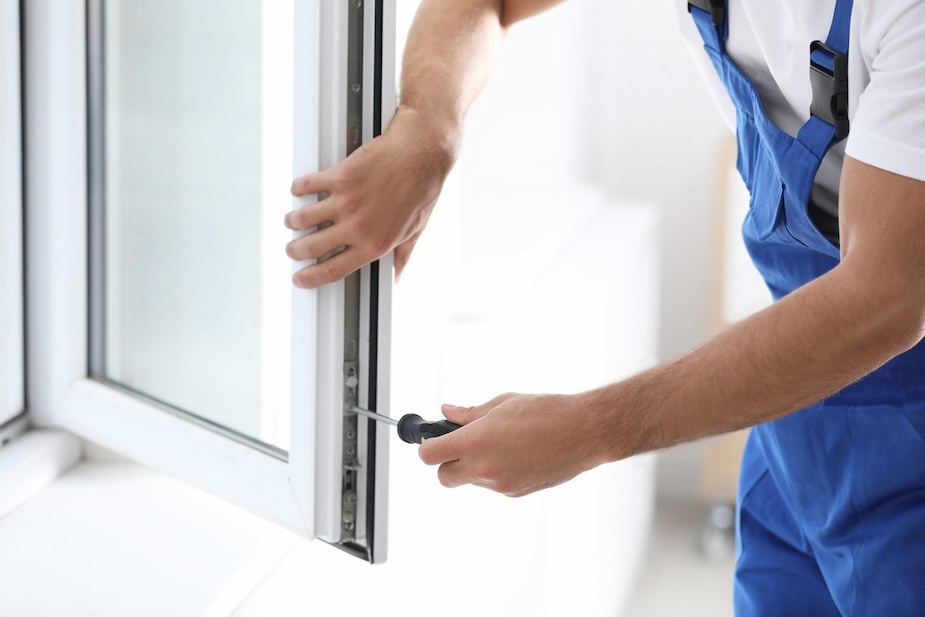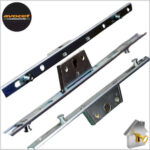15 Pinterest Boards That Are The Best Of All Time About Lock Repair
페이지 정보

본문
 How to Do Your Own Lock Repair
How to Do Your Own Lock RepairIf your locks start to fail You can attempt to fix them yourself or hire an professional locksmith. However, lock repair can be a challenge and if you don't follow the correct procedure, it could result in further damage.
It is important to first see if the problem is due to dirt or dust. This can usually be cleared by applying a graphite-based spray or silicone-based lubricant.
1. window door repairs locks glass hinges Handle or Knob Lock
As time passes, door knobs and handles may become loose. This could result in an unbalanced knob or handle that is difficult to open. It is crucial to replace loose door knobs since they are not only annoying but also can affect the security of your home. A doorknob that is loose is easy to repair. There are a few different ways to fix this dependent on the lock your door comes with. Certain systems have mounting screws that are accessible, while others use a backplate that obscures the screws holding it together. This is a more complicated method when your door has a backplate that hides the screws.
The majority of interior doorknobs are designed to slip over a cylindrical spindle, which is attached to the door as a part of the latch assembly. If yours is jiggly it could be due to a small screw called a setscrew located inside the knob that prevents it from sliding across spindle. Make use of flashlights to locate the screw and use an Allen wrench to tighten it. Once it's tightened up, test the knob and see if it no longer feels jiggly.
If your knob is still moving, it could be because the set screw isn't placed correctly. To ensure that the screw is in the correct position, look for a small, matching button on the spindle. Press the button using a flathead screwdriver, and then slide the knob over the spindle. The knob should move into the proper position when you do this, which indicates that it is positioned correctly on the spindle.
Once you have ensured that the set screw is properly positioned then tighten it a second time to secure the knob. If this does not resolve the problem, you may need to remove the knob from the backplate, and then check for missing or loose screws. If this is the case, you will need to replace these screws before re-securing the knob or handle. If you aren't comfortable with this type repair, you must call an experienced locksmith who can provide repairs for damaged locks.
2. The key won't turn in the lock
There are a variety of reasons your lock key may stop turning. One of the most frequent reasons is that the pins in the cylinder have begun to wear down and no longer have the proper shape to move the wafers, sliders or tumblers that allow the key to open the lock. In this instance an easy fix is spraying the lock with graphite spray or silicone-based lubricant to coat the pins and allow them to move once more.
If the issue is more severe, and the key is bent, you may have to have it straightened by an expert. A professional locksmith will use an exclusive tool that has an edge that is curved to fit into the groove that runs along the edge of the key. This type of tool is not available in hardware stores, however you can purchase an entire kit of the correct tools online or at an establishment that sells locksmith tools.
Another possibility is that the lock is dirty or damaged. Dust can accumulate over time within the window lock repair cost's cylinder, and causes the springs or pins to become stuck. In this case you'll be required to spray the lock with WD-40, graphite spray or a lubricant made of silicone to get rid of it and then reposition the pins back to their original position.
If the key itself has become damaged, it could also be a cause for concern. Keys can wear down with time due to repeated use, which will result in the groves wearing down or even become smoother. This could result in the key not to fit into the cylinder. It is crucial to regularly check to ensure that the key fits correctly.
Locks can freeze in the winter months. This will stop the pins and springs from moving when keys are inserted. This can be a nagging issue, but it is usually relatively simple to fix by warming up the lock using hot water and then using the lubricant again to re-lubricate. If the lock is damaged beyond repair or has froze it must be replaced.
3. The lock isn't turning
It can be frustrating to have locks that don't turn or open. If it occurs frequently, you might consider getting locksmiths to examine the lock and see if they can help. It is not always necessary however, as some issues can be solved by yourself.
The key will not turn inside the lock if damaged. This can happen if you've lost your keys or it's broken inside the lock. Instead of trying to fish the key out of the lock, which could result in it being further pushed into the mechanism and increase the risk using needle-nosed pliers, you should remove the key from the lock. Be careful not to harm the lock by breaking off any part of the broken key with the pliers.
It's possible that your lock isn't aligned properly which could cause the door to not latch properly. If you're fortunate enough to have an additional key, it can be tested in the lock to ensure that it functions properly and isn't the cause of the problem. If you find that the lock is not properly aligned, tightening the screws around the strikeplate can solve the issue and let the lock to function normally.
Another reason your key may not be turning is that there is dust or dirt in the double glazing window lock repair preventing it from turning. This issue can be fixed by using a graphite or silicone-based lubricant to cover the pins of the lock. This allows them to move up and down in a normal manner. It is important to avoid using oil based products like WD-40 to solve this issue, because they can cause blockages later on.
Also, it's important to note that there are certain kinds of keys that aren't able to be used in all locks. If yours is one of these, it might be time to get a replacement locks for double glazed windows Upvc window lock repair near me locks [Longshots.wiki] key made at an area hardware store to ensure that it works in the lock.
4. The Cylinder Is Rotating
Hairpin vortices can form when a cylinder turns within a confinement. These vortices may exert significant forces on the cylinder rotating. The force is proportional to dimensionless curvature radius x and the confinement factor. The cylinder's tube, head, and main body are all made of aluminum alloy.
If you're able to get your key inside and turn it however the lock is still rotating, there may be an issue with the cylinder. Rekeying the lock may solve the issue. There are kits made for this purpose that can be purchased online or in most big box stores.

- 이전글Five Things Everyone Makes Up Concerning Green Power Mobility 24.11.25
- 다음글Why We Our Love For Double Glazing Door Locks (And You Should Also!) 24.11.25
댓글목록
등록된 댓글이 없습니다.